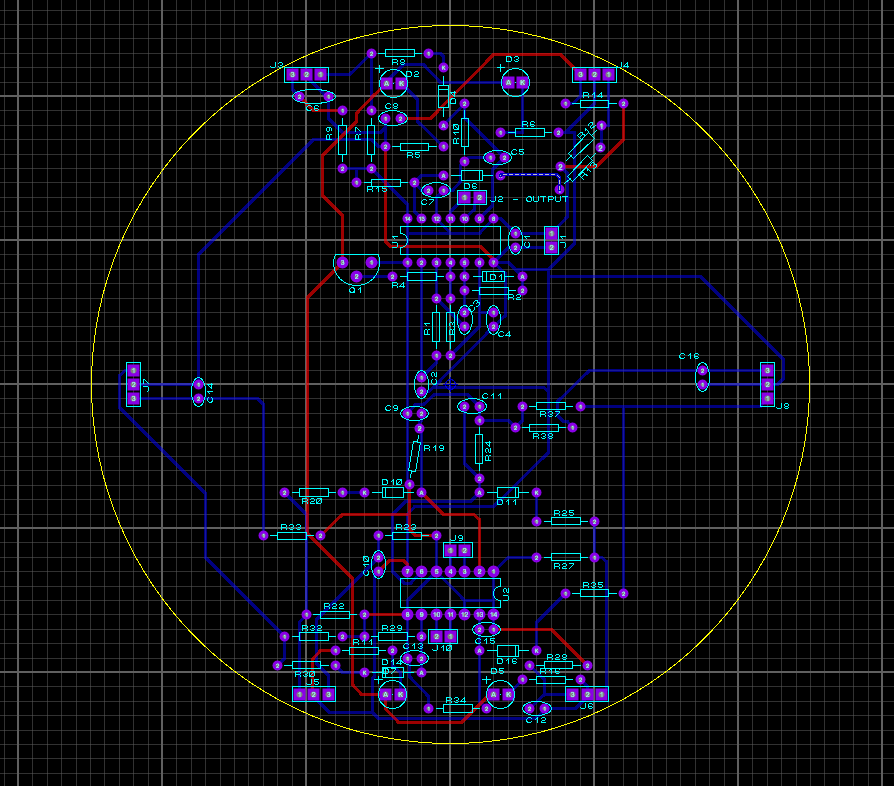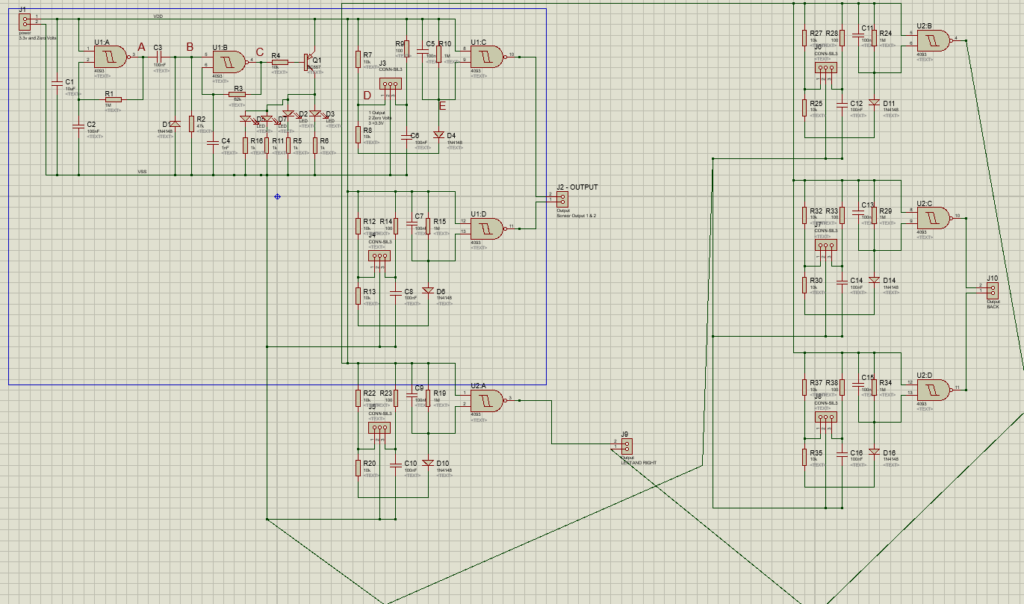Design
Design is a crucial part of our micro-mouse IR PCB, and Team Juliet has taken this phase of design and production very seriously. We have allocated a lot of time and effort into understanding and developing a robust, and reliable PCB. Team Juliet allocated Peter to lead this part of the project.
- This was the very first prototype of the working IR circuit. The circuit was prototyped in the laboratory on a breadboard. This board was tested thoroughly to test how it reacted to changes in its environment.
- The IR breadboard prototype was shown to be a good prototype, showing all the traits we wanted.

PCB Design
- The purpose of PCB design is to add more features to the board and detects any issues or faults on the micromouse. For instance, by adding the sensors and LEDs on the board, the micromouse will work smoothly on the track and prevent any expected mistakes which might lead to losing the competition.

Schematic Diagram
- The schematic diagram was handed by Mr David Moody instead of the circuit diagram because it helps to understand the process and the method of designing the PCB, so without the schematic diagram we would struggled to finish the PCB.

PCB Building Process
- The PCB was designed to match the components which required extra work in order to prevent any mistakes which would lead to destroy the board and trying not to work on another one and that will make us waste time. However, the PCB was carefully drilled in the exact targeted places so the components can fit in the holes. Sensors have been added to the board so it can detect opponents and recognise the direction in both ways.
